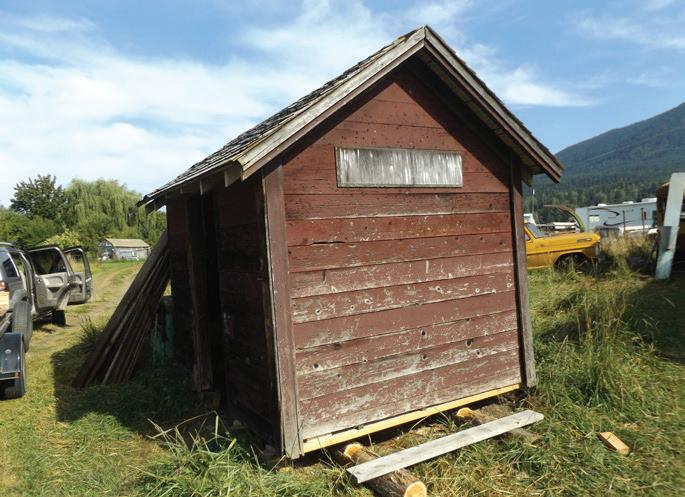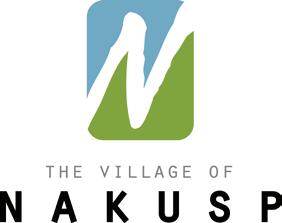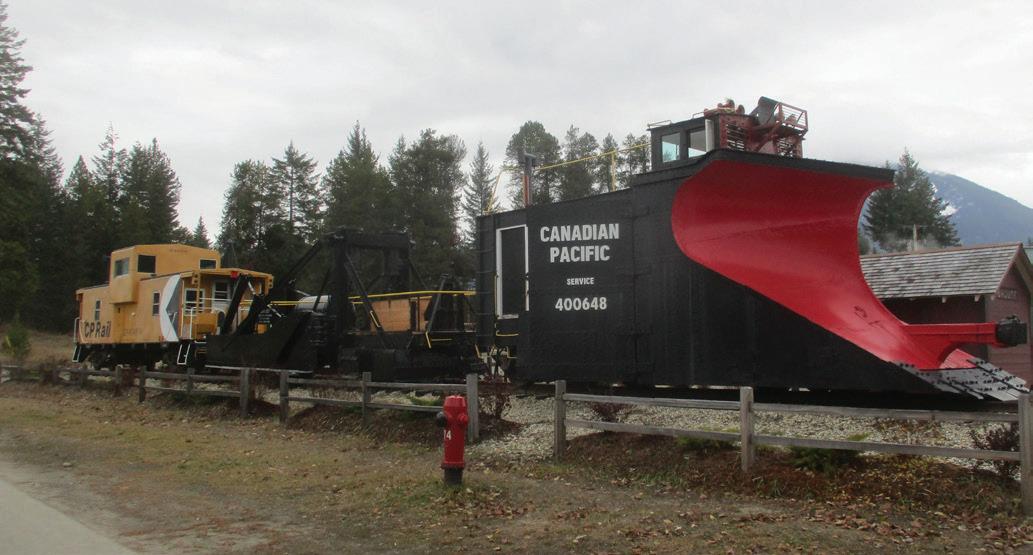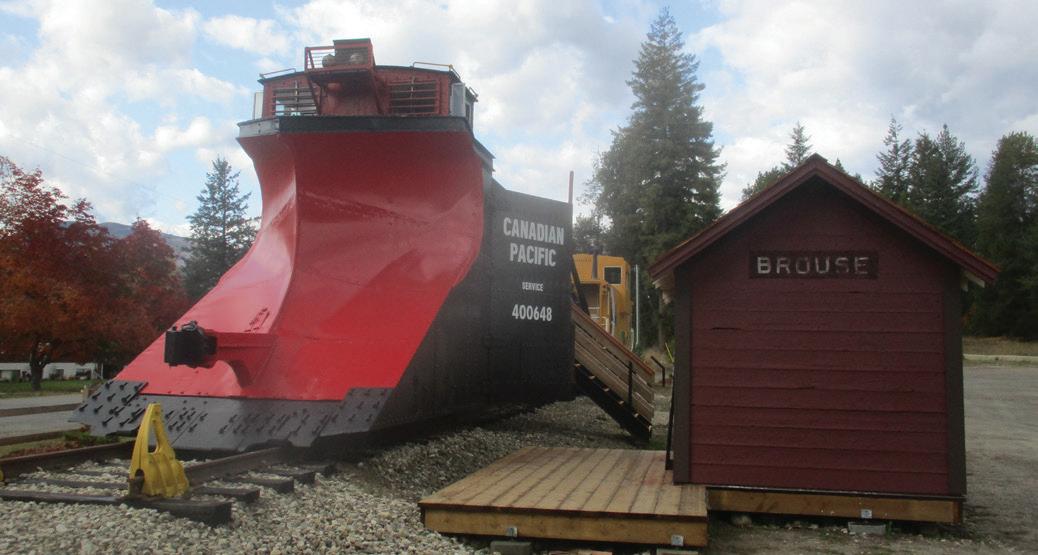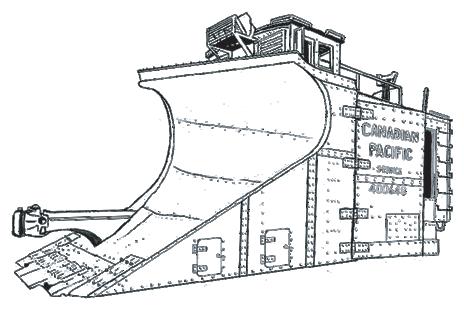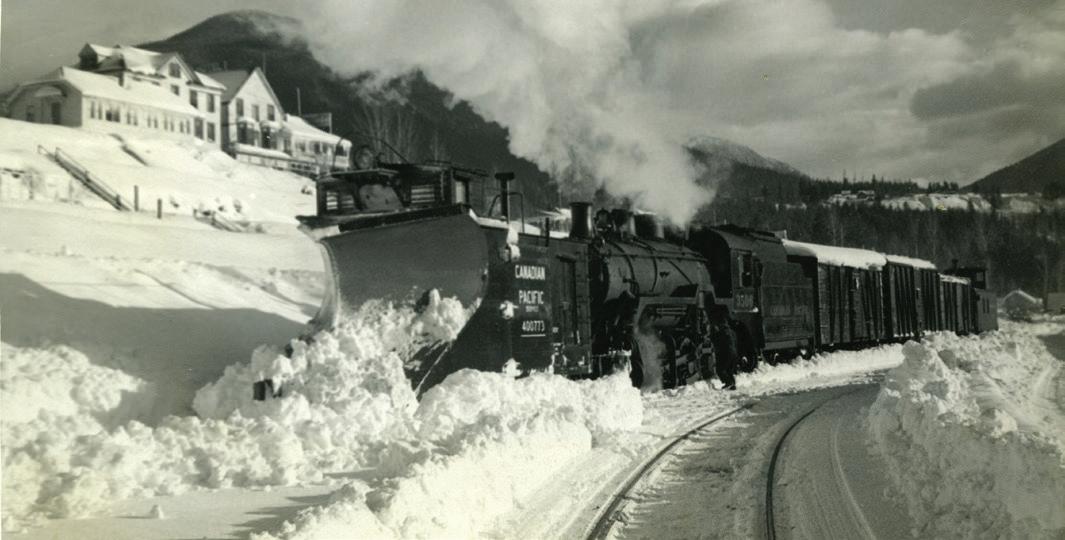Canadian Pacific (CP) Station #9487 served as the railway station for the farming community of Brouse (5 km east of Nakusp Recreation Park) until the end of passenger service in 1956. In the early 1990s, Brouse resident Jerry Krivsky saved the station by relocating it to his farm a short distance away. After Krivsky’s passing in 2018, the Krivsky family donated the station house to the Rail Society, who completed restoration at the end of 2019.
Brouse
Indiana. Jordan spreaders were developed over the course of the 1890s and 1900s These multipurposed
The acquisit on and installation of the Brouse Station building and the Jordan Spreader in 2019 and the subsequent restoration, was funded in part by the Columbia Basin Trust and Heritage BC through the Built Heritage Grants and the Heritage, Museums and Archives Grants, as we l as the CBT Community
We also gratefully acknow edge additional partners and funders:
The original
railway station as it sat on the Jerry Krivsky farm in Brouse, 9 August 2019.
Photo: Ken Williams
CP Ballast Spreader #402811 as featured on display in Nakusp Recreation Park.
Photo: Ken Williams
The Nakusp and Slocan Railway
The rolling stock pieces on display in Nakusp Recreation Park are Historically significant to the Nakusp region as they are similar to the stock used on the Nakusp and Slocan Railway (N&S), a subsidiaty line of the Canadian Pacific. Railway (CPR) which operated from 1894 to 1988. During the West Kootenay mining boom of the 1880s-1890s, it was feared that US interests would use the area’s north-south valleys to divert the riches of the region to the south, and the movement to construct an all-Canadian route to ship ore out of the Slocan Valley accelerated. In 1893, approval was given for a 38 mi (61 km) railway between Three Forks (near the mining boom town of Sandon) and the CPR shipyard at Nakusp; this was extended two years later into Sandon itself. Slocan ore could now be shipped via Arrow and Slocan Lakes to CPR trunk lines at Revelstoke and Robson.

Thanks to the railway, Nakusp became a major regional transportation hub. In 1914, CPR traffic began running uninterrupted between Nakusp and Kaslo. however, the advent of widespread car ownership in the 1910s-1920s led passenger traffic on the n&S to collapse. By this time, the kootenay mining boom had subsided: forestry operations at Nakusp, Brouse and Summit Lake kept the line alive. After 1955. the operations of the N&S were truncated to the run between Nakusp and Rosebery as traffic slowly wavered. By the 1980s, the N&S only made one round trip per month. Abandonment was finally approved in 1988, with the final run made on the 20th of Decenber 1988.


CThis diagram illustrates the changes along the Nakusp waterfront since the 1960s, including the removal of the N&S Railway. The top of the image shows the original shoreline landscape in the mid-1960s - now underwaterwhile the bottom of the image shows the new, post-Keenleyside Dam waterfront circa 2010. Note the loss of not just the railway but all of Bay Street, Nakusp’s original industrial zone.
Yellow - Nakusp & Slocan Railway (original)
Blue - Nakusp Waterfront Walkway (modern)
Loading the caboose onto the truck in Revelstoke, 21 July 2016. The cupola had to be removed due to height issues during transport.
Bringing the Railway Back to Nakusp
I Comp a ny (C P) m i g ht b e w il li n g to p a r t w it h Fol low i n g a com mu n it y me e t i n g to de te rm i ne i f t he r e w a s e nou g h i nte r e s t i n Na k u s p acq u i r i n g one or b ot h of t he pie ce s , a nd i f t he r e we r e i nd i v idu a l s w it h t he t i me , e ne r g y, a nd sk i l l s to m a ke it
h app e n , t he Na k u s p R a i l Comm it te e w a s f or me d .
W ork i n g i n co op e r at ion w it h t he V il l a ge of Na k u s p a nd t he A r r ow L a ke s H i s tor ic a l S o c ie t y, t he comm it te e pl a n ne d t he acq u i s it ion a nd move , r a i s i n g e nou g h f u nd s to cove r a l l t he co s t s of r e lo c at ion , t r ac k con s t r uc t ion , a nd r e s tor at ion t h r ou g h g r a nt s , don at ion s , a nd i n - k i nd work Muc h of t he m a np owe r f or t he pr e p a r at ion s a nd t he move w a s pr ov ide d b y ou r de d ic ate d volu nte e r s . C P ve r y ge ne r ou sl y don ate d t he c ab oo s e a nd s now plow to t he V il l a ge of Na k u s p.
Af te r s e ve r a l d ay s of pr e p a r at ion s i n R e ve l s toke , i nc lud i n g r e mov a l of t he c up ol a s due to he i g ht li m it s on t he h i g hw ay, t he pie ce s we r e lo ade d onto t r a i le r s on 2 1 Ju l y 2 0 1 6 a nd t r a n s p or te d to Na k u s p v i a H i g hw ay 2 3 , i nc lud i n g a jou r ne y on t he Upp e r A r r ow L a ke f e r r y T he f ol low i n g d ay, t he pie ce s we r e u n lo ade d onto t he t r ac k , t he c up ol a s we r e put b ac k i n pl ace , a nd t he volu nte e r s so on got to work on t he r e s tor at ion . B y t he e nd of 2 0 1 6 , s a ndbl a s t i n g a nd p a i nt i n g h ad r e s u lte d i n T
he Na k u s p R a i l S o c ie t y w a s
Photo: Jerry Crane
A Canadian Pacific snowplow clears the tracks for a Nakusp & Slocan Railway train, Nakusp waterfront, 1950s.
Photo: Arrow Lakes Historical Society
CPR diesel engine #8637 rounding bend along Slocan River, 1970s. Photo: Arrow Lakes Historical Society
